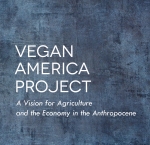 Martin Rowe
Martin Rowe
In 2004, Toyota produced a “vegan hybrid Prius”: i.e. one without leather seats or furnishings. On the one hand, this was an extreme measure, since, according to a 2016 poll by the Vegetarian Resource Group, vegans currently constitute about half of the 3.2 percent of Americans who call themselves vegetarians. (That number would likely have been lower—although not, instructively, by much—thirteen years ago.) On the other hand, as Sharon Bernstein of the Los Angeles Times reported (September 5, 2004) on Toyota’s decision, “Pleasing vegans, the theory goes, is key to reaching a wider group of consumers—affluent shoppers who worry about the environment and who are willing to pay extra for food, clothing and even automobiles, if they are made in ways that do less harm to the planet.”
In reporting the same story, the Los Angeles Times quoted Bob Kurilko, vice president of marketing for the automobile website Edmunds.com: “‘As a marketer you want to identify with the passionate group. . . . The middle of the bull’s-eye is where you want to focus your marketing, and then you want to expand your message around that. If you draw these concentric circles, the middle of the bull’s-eye right now is the vegan.’” Assuming that Bob Kurilko is correct, then veganism—for all its minuscule presence in the culture at large—is a central identity marker and this story presents an interesting case study in how and why apparently peripheral ideas move to the heart of social change.
When I read about Toyota’s decision, I was struck by the logical illogicality of it. By simply making veganism the default option, and forcing all other consumers to make an active decision to, in this case, purchase a leather interior, Toyota (to my mind, at least) was in effect asking industry and society to question what it considered normative. Nobody’s rights were being infringed or choices denied. Instead, Toyota was, in effect, banking on the great majority of their customers (whom one would assume weren’t vegan) not caring enough to choose to purchase a leather interior. Simultaneously, the company was encouraging others who might not be vegan but liked a company that promoted an identity affiliated with environmental awareness, care for animals, and a commitment to values to buy the Prius.
Now, I wasn’t immune to cynicism in 2004: it’s great marketing to get folks to pay more for a product by trumpeting exclusivity and conscientiousness. As we saw with the scandal over Volkswagen’s rigging of its tests for its “green” diesel vehicles, the trumpeting of virtue can be a cover for corporate greenwashing. It’s entirely possible that some parts of the car weren’t vegan: the rubber tires, for instance, probably contained stearic acid, the asphalt those vegan Priuses drove on almost certainly had trace elements of glycerin, and the bugs splattered on the windshield or small mammals under the carriage wouldn’t have particularly cared whether they were killed or run over by a vegan or non-vegan Prius. That’s no doubt true of the 2016 vegan version as well. But, leaving aside the fact that most vegans would admit that it’s impossible to survive without negatively impacting animals in some way or because we live in an imperfect world, I didn’t believe then—and don’t now—that the vegan Prius was merely a slick marketing ploy directed at credulous consumers with an overly inflated sense of their own worthiness.
But even if it was mainly or solely a marketing ploy, my interest in the Prius wasn’t then—and isn’t now—as a car or a consumer item. (I have never owned a car.) As I read the story back in 2004, I began to wonder what it would be like if “the vegan option” was the default across every sector of society. What if products containing animals weren’t on the shelves at supermarkets but kept in a storage room around the back? What if you had to ask a manufacturer for a fur-lined collar on your jacket? What if we took all those externalized costs to human health, the environment, and animal welfare associated with industrialized animal agriculture and placed them on the meat and dairy products that people consume and then made those prices visibly comparable and contrasted with in restaurants and in supermarkets? How much more money would people be willing to pay? And how much effort would we wish to expend to acquire those products?
A tax, such as on cigarettes or plastic bags, would no doubt depress demand. Those who’d fight an economy-wide “meat and dairy tax” would likewise employ the same arguments the tobacco, plastics, and soda manufacturers made against policy-makers who wanted to restrict the use of their harmful products: that the science was ambiguous and that a tax would be anti-choice and regressive—hurting the poor the most. In the case of meat and dairy, critics would claim it would negatively affect farmers, American exports, and the restaurant and food business as a whole—and the resistance would be intense. However, a tax against meat is no longer beyond the realms of possibility.
Even more interesting to me than the public policy dimension of Toyota’s decision, however, or the uses of choice architecture to bring about change, was that it suggested that veganism could be a useful device to make the unthinkable, thinkable. And it was that notion—of veganism as being good to think with—that stimulated me to conceive of the Vegan America Project. I’ll discuss more about veganism being good to think with in a later blog. In the next one, I talk about another genesis for the Project.